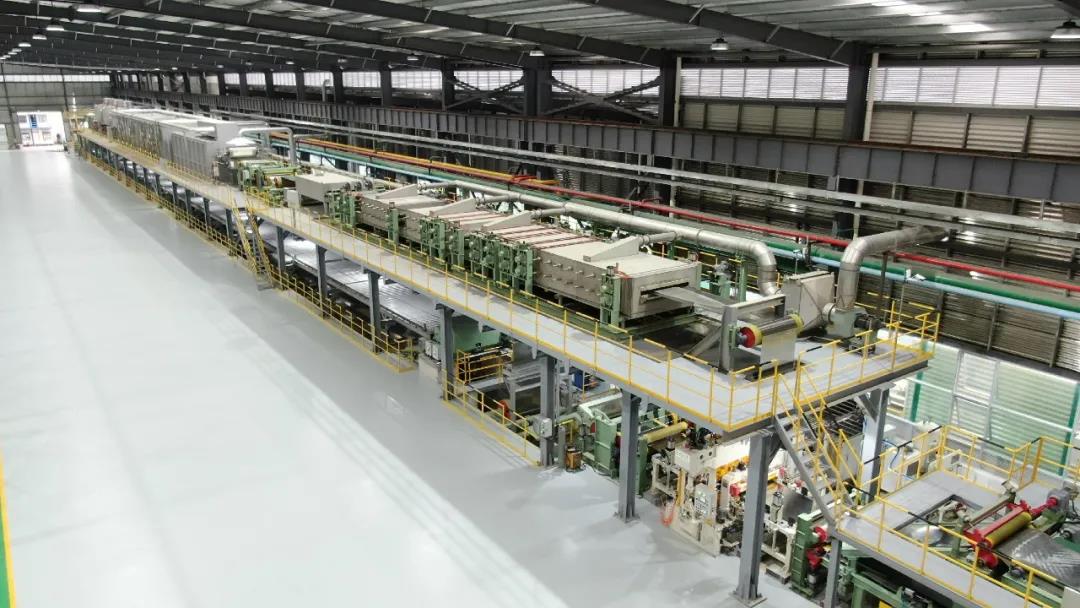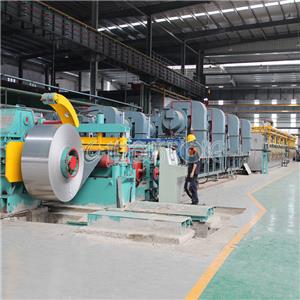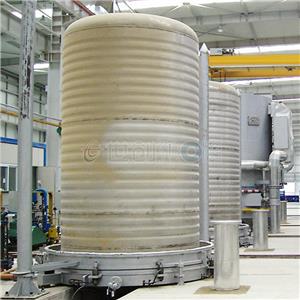Defect Analysis and Repair of Bright Annealing Muffle Furnace for Stainless Steel Strip

The stainless steel bright annealing production line (BAL) of a steel mill is a large-scale production line designed and manufactured by a foreign company for bright annealing stainless steel strips. Its total height is 55m, and it can handle stainless steel plates with a width of 600 to 1250 mm and a thickness of 0.1 to 3.0 mm. belt.
The muffle tube in the furnace is large in size (<1820mm×28500mm) and large in mass (20000kg). The normal use temperature of the muffle tube is above 1000℃, and the maximum working temperature can reach 1200℃. Since the material for the muffle tube is a high-temperature nickel-based heat-resistant alloy, the material has excellent mechanical properties, especially excellent high-temperature durability and oxidation resistance, which cannot be produced in China and is completely dependent on imports. The long-term effect of high-temperature self-weight conditions causes various defects in the operation of the stainless steel bright annealing production line, which affects production. In actual production, in order to ensure the reliable operation of the BAL and shorten the time for replacing the muffle, two muffles (represented as A1 and A2) were prepared. The two muffles (one used and one standby) were defective in the actual operation. It cannot be used normally. It takes about 1 year to produce a new muffle and is expensive. Therefore, analyzing the causes of various defects and repairing the muffle will help ensure normal production, which has important engineering application value.
Under the influence of factors such as long-term high temperature, self-weight (20000kg) and uneven temperature caused by uneven burner combustion, the muffle tube will experience necking, wall thickness reduction, weld cracking, cross-sectional deformation, and banana during use. Shape bending, bulging and other defects.
For defects such as elongation, necking, thickness reduction, section deformation, bending, and bulging caused by high-temperature creep, it can be repaired by removing the failure part. For this reason, a comprehensive measurement of the muffle tube is carried out before the repair to determine the repair process and the acceptance criteria after the repair. Secondly, welding is performed after the defect is removed.
A1 pipe defects are mainly manifested as: the first ring weld cracking, the second hoisting flange design defects and local bulging, banana-shaped bending, severe necking of the A section, thinning of the wall thickness, large-area cracks and cross-sections Deformed. Therefore, fully considering the characteristics of the above defects, the repair plan adopted is as follows: ①First, cut off the cylinder body of about 100mm on both sides of the first weld with a manual cutting machine, and re-weld (the specific cutting length should be determined after checking the cracks by coloring. ); ②Cut the secondary lifting flange with a manual cutting machine, and cut off the bulge section about 400mm, manually correct the flatness of the end of the cylinder, and then double-sided chamfering and butting; ③The cylinder is made of alternative materials with a thickness of 15mm and welded to it. The total length from the tail of the muffle tube to the muffle tube is 28522mm; ④The secondary lifting flange structure and installation parts have been redesigned, and the entire flange welding structure has been changed to a segmented flange welding structure.
The defects of the A2 pipe are mainly manifested as: burn through at the secondary lifting flange, multiple bulging defects, banana-shaped bending, severe necking of the A section, thinning of the wall thickness, large-area cracks and cross-sectional deformation. Therefore, fully considering the characteristics of the above defects, the repair plan adopted is as follows: ① Use a plasma cutting machine to cut the muffle tube from the secondary lifting flange; ② Use the color penetration inspection method to check the muffle tube perforation cracks to determine the size of the cut. The muffle tube is cut by a manual grinding wheel cutting machine; ③The surface incision is polished according to the welding groove requirements. Since the muffle tube incision section is already elliptical (the long axis is about 1900mm, the short axis is about 1700mm), you must press The oval shape is restored to butt joints, and then manual welding is carried out; ④The welding seam quality is checked by the color penetration inspection method; ⑤The replacement steel plate of a certain length (<1820mm×900mm, thickness 15mm) is welded at the bottom of the muffle tube to make the total length of the muffle furnace reach the design Requirements (approximately 28500mm); ⑥ The secondary lifting flange treatment is the same as the A1 muffle tube; ⑦ There are 7 bulges in the A2 muffle furnace. Because there is no suitable material, only the most serious bulges are used in the same way as the burn-through method. The entire section was excised and butt welded, and the bulge at the remaining parts could only be inspected by regular follow-up penetrant inspection.
The A1 muffle tube has been used for 3 years. According to the corresponding defect form, the muffle tube has been repaired according to the established repair plan through the evaluation of its material strength and welding to make it meet the standard of use.
The A2 muffle tube has been used for nearly 2 years, and the muffle tube has been repaired according to the material strength evaluation and the established repair plan. The repaired muffle tube has been in continuous operation for 17 months and has been in good condition. After getting off the machine, X-ray inspection was performed on all welds, and no new cracks were found, and it can be used continuously. The field application shows that the repair according to the above-mentioned repairing process plan has been successful, and it also verifies that the welding performance of the selected nickel-based superalloy and the alternative material is fully satisfactory for use under the action of high temperature.




